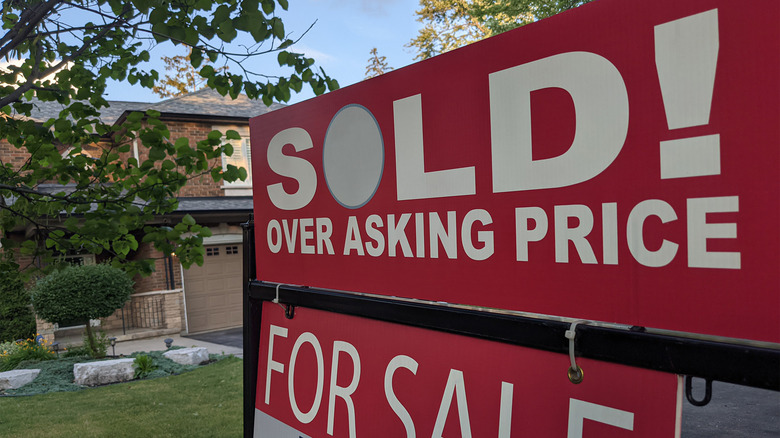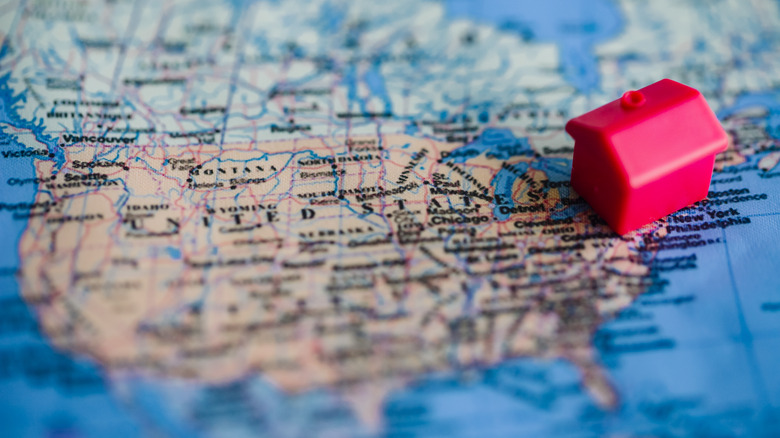New Study Has Disheartening News About The State Of Real Estate Equality Today
In 1968, Title VIII of the Civil Rights Act, also referred to as the Fair Housing Act, was passed in the United States Congress, but for many, equitable access to housing is still far from a reality. This act prohibited direct discrimination in the housing market on the basis of race, religion, nationality, and sex. It was a major step in the right direction — until that point, a seller could legally deny someone access to a home they could afford based on one of those factors — but it didn't fully eliminate the problem.
Despite the legislation in place, housing equality is still a major issue today, and according to a study from Today's Homeowner, it's grown even worse in the last decade. According to the analysis, in 2021, the Black homeownership rate was only 43%, compared to the white rate of 72%, a surprisingly similar gap to data from 50 years ago.
What causes real estate inequality
The Fair Housing Act might have outlawed discrimination in the housing market — but equal opportunity has been slow to follow, especially in a market that's grown less and less affordable over the years. Generational wealth and access to higher-quality education throughout the years have given white families a financial leg up, meaning higher homeownership rates as a result.
"Even where discrimination poses no barrier, Black would-be home buyers, on average, have less family wealth, lower income and more debt due to past redlining, generations of outright exclusion from the housing market and other economic deprivation," National Association of Realtors Vice President of Advocacy and Policy Bryan Greene explains (via NAR). "If you gaze into that yawning homeownership gap, you're seeing a century or more of wealth deprivation. Today, this legacy means a Black buyer is less able to raise the funds for a down payment, and their credit profiles are strained."
Where is it the largest issue?
The entire country has felt the impacts of these issues because of the nation's history of segregation, redlining, and racist policies, but some cities are faring better than others. According to the study from Today's Homeowner, there are even a few cities that have avoided this homeownership gap altogether. Santa Ana, California; Corona, California; Pueblo, Colorado; and Manteca, California are a few standouts that have reversed this gap and have higher Black than white homeownership rates.
On the other hand, however, there are some areas where this gap is continuing to grow. The widest split is in Arden-Arcade, California, where the Black homeownership rate sits 53.6% lower than the white. Mesa, Arizona, and Bethlehem, Pennsylvania trail closely behind in the data, both coming in at more than 50% lower as well. Nowadays, homeownership rates might not be a reflection of active discrimination on behalf of sellers, but they serve as a tangible marker for other occurrences of systemic financial inequality. Experts says that policies like down payment assistance programs can help narrow the gap.


